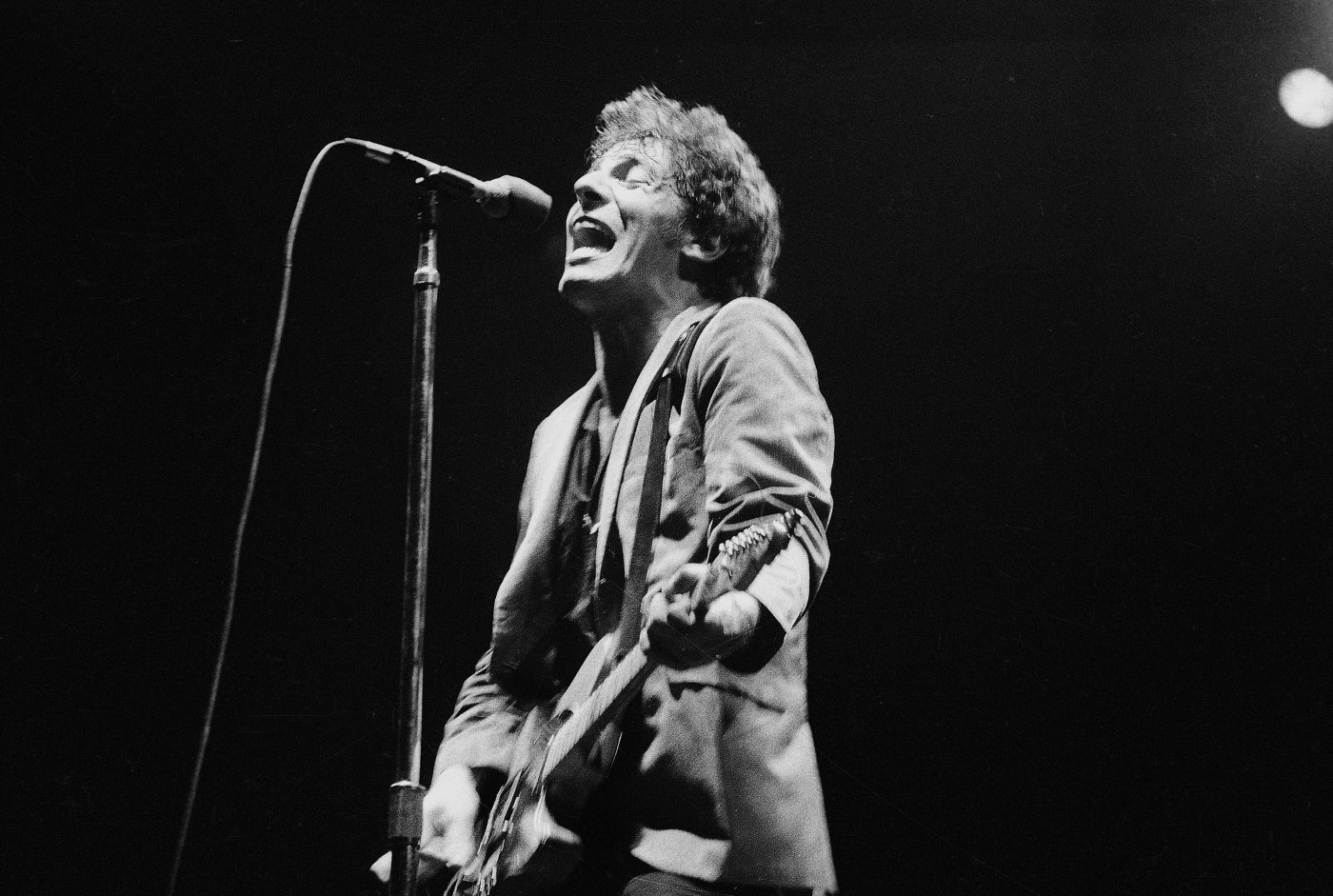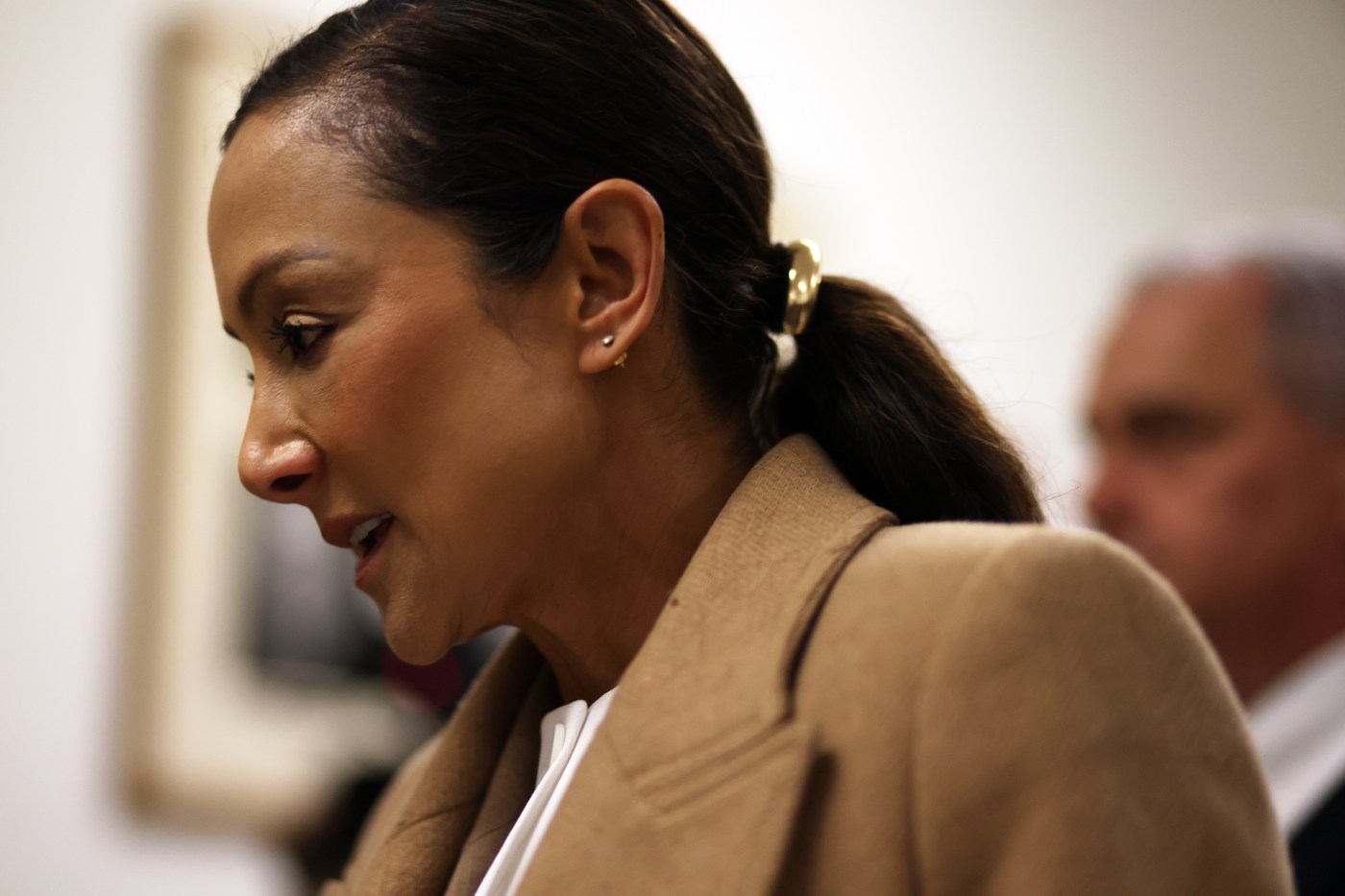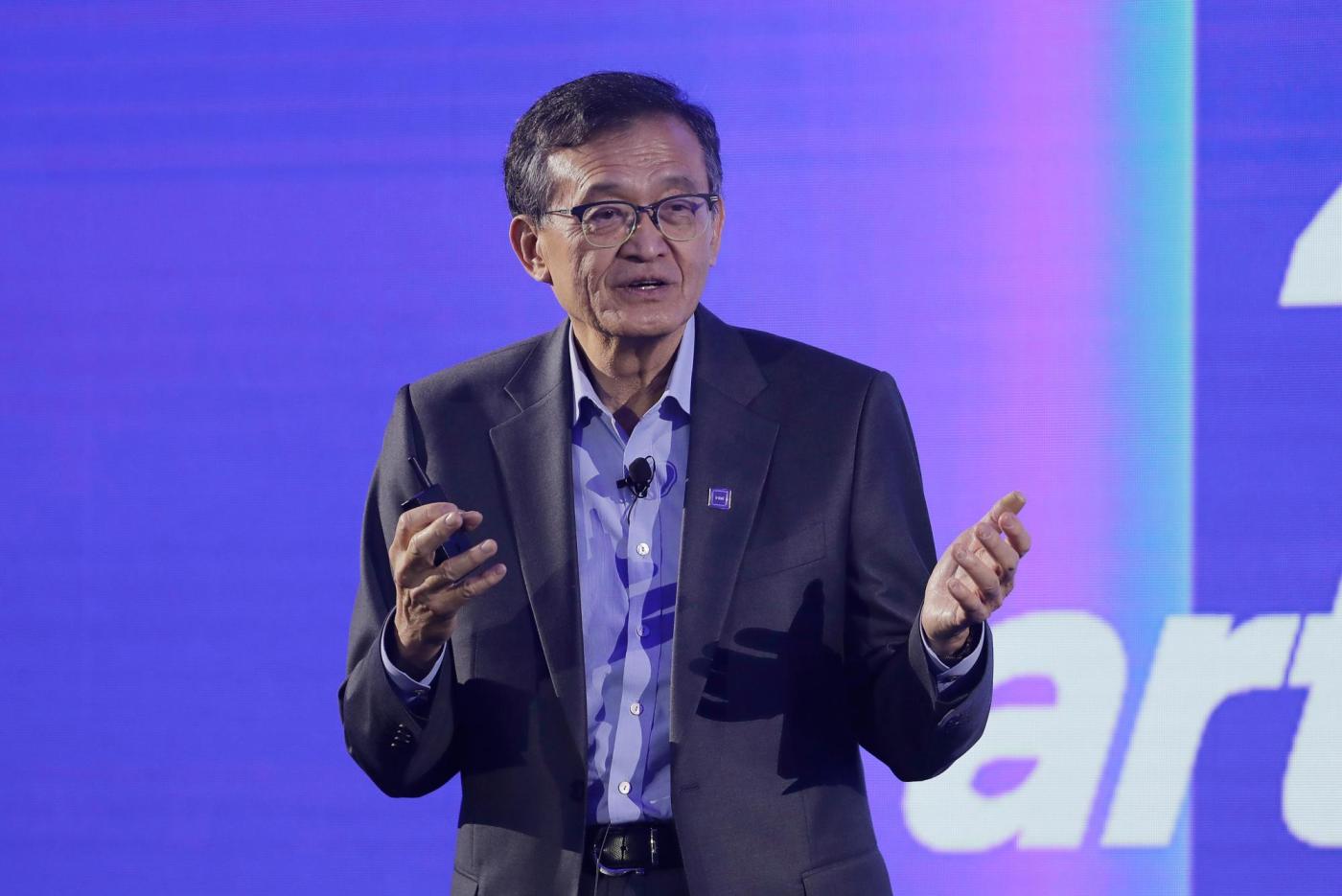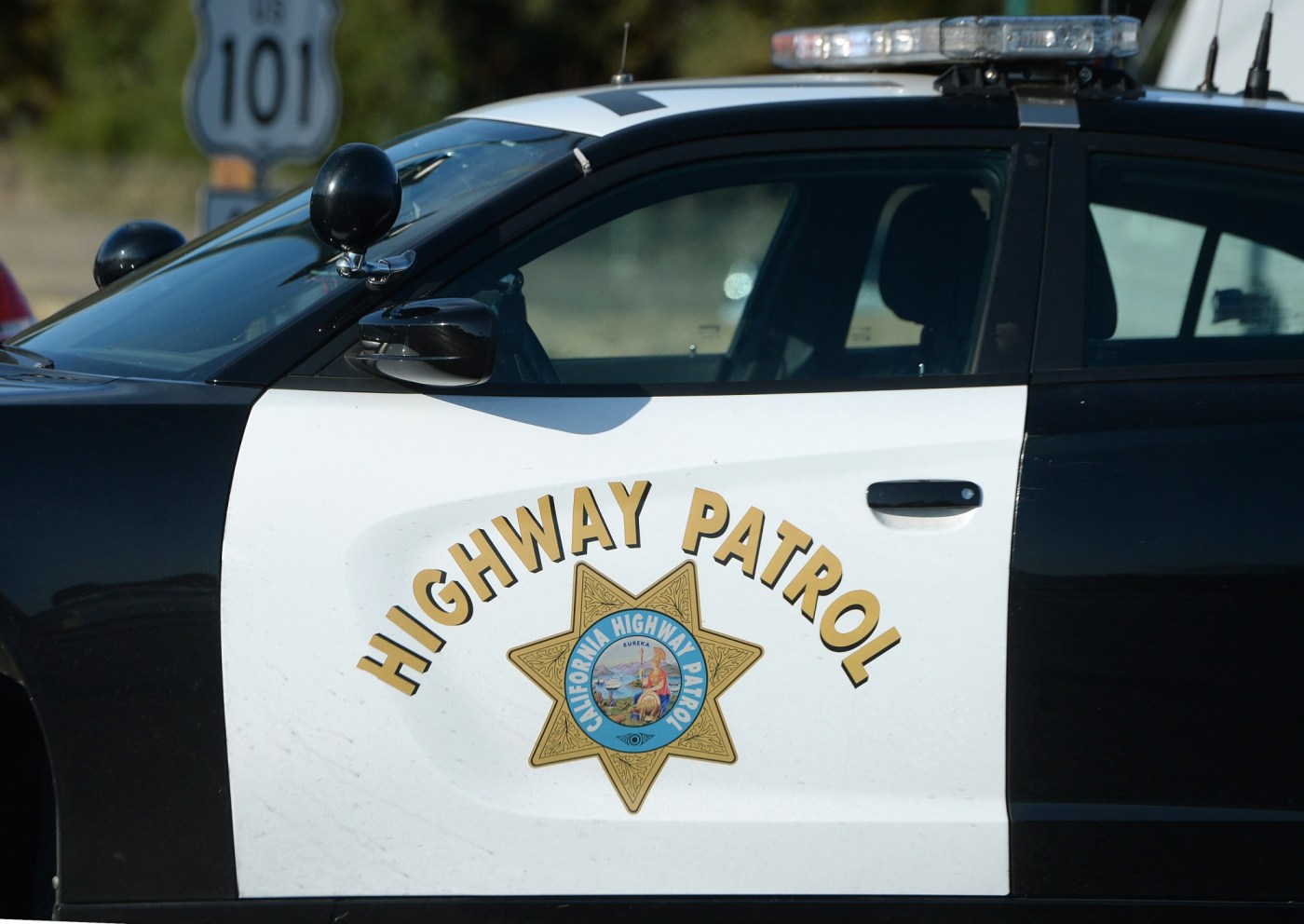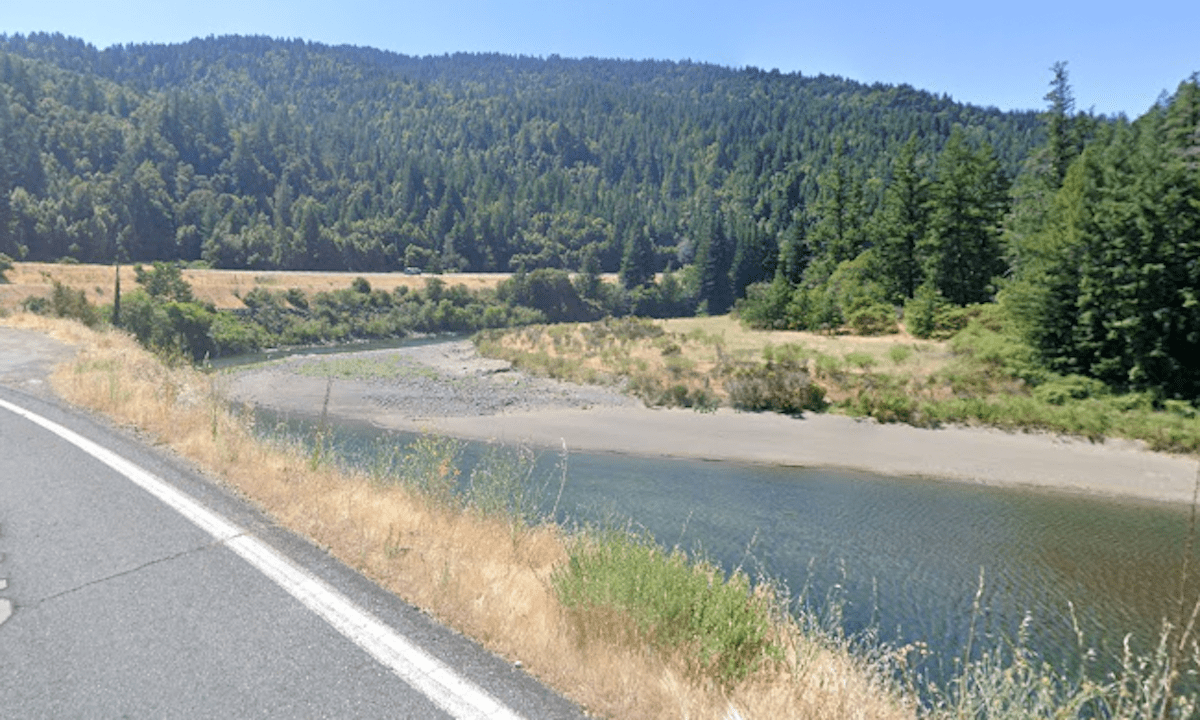Peter Ames Carlin first heard Bruce Springsteen’s single “Born to Run” in 1975 when the future music biographer was a 12-year-old kid in a car headed home from a hike with his Boy Scout troop.
He was, he admits, less than impressed.
“I remember the disc jockey saying, ‘Well, this guy is supposedly the savior of rock and roll. Let’s see how it sounds,’” Carlin says on a recent phone call. “He played it, and it was like it didn’t sound like everything else I was used to hearing on the radio.
“Music was pretty breezy in those days,” he says. “That was the Bee Gees and KC and the Sunshine Band. Paul McCartney and Wings, and Elton John. I loved that stuff then, and I love it now.
“I hadn’t been prepared for how serious and operatic and intense the Springsteen style of music was. And he’s singing that song, that real Roy Orbison-ian sort of cry in his voice, which I love.
Related Articles
Jerry Garcia wasn’t political. But the Grateful Dead symbolized defiance in a deeply political moment
The Chai Lab brings tea pop-ups to Peninsula bookstores
Kamala Harris to release book about 2024 presidential campaign
Two Bay Area authors highlight California coastal homes in new book
Bay Area author’s new travel book shows another side of San Francisco
“But it didn’t sound like stuff on the radio, so when I first heard it, I was kind of like, ‘OK, whatever. Not my bag,’” Carlin says.
Three years later, around the time he saw Springsteen and the E Street Band live for the first time, Carlin went back to the album “Born to Run,” and with fresh ears and a hungry heart, felt an almost supernatural epiphany, as he writes in his new book, “Tonight In Jungleland: The Making of Born to Run.”
“Adolescents always have a rough time,” he says. “And I was fragile and sad, because of course, right? So I would turn to an album like “Born to Run,” and really connect with that sense of feeling trapped and suffocated by the town that you live in and all the expectations of the older generations.
“Being able to hit the road, go somewhere else and redefine your life, that’s really an American ideal, right?” Carlin continues. “But Bruce was doing that thing that great artists can do, where you take these essential ideas and distill them in a new way that feels current and exciting.
“And when you’re 15, 16 years old, and trying to figure out who you are and what your life is going to be, the stories he tells on that record, the descriptions of the town crumbling around these people, and that urgency and determination to escape and rebuild your life was super powerful.
“It acknowledged the darkness in the air around you, but on the other hand, it also proposed that you had the ability to change your life and define what your world and your life were going to be,” Carlin says. “And when you’re a teenager, that’s exactly what you want to hear.
“And, you know, it didn’t hurt that it was incredibly powerful, ass-kicking rock and roll,” he adds.
Carlin’s previous books include last year’s “The Name of This Band is R.E.M.” and the 2012 Springsteen biography “Bruce.” He talked about his new book on “Born to Run,” as he and his wife, the writer Claire Dederer, drove from home to Seattle after a book tour stop in Portland, Oregon.
In an interview edited for length and clarity, he talked about the race to complete the book in time for the 50th anniversary of “Born to Run” on Aug. 25, why the album-closing “Jungleland” became such a significant part of his narrative, the religious undertones of “Born to Run” and its characters, and more.
Q: You wrote this book in less than a year. Did people think you were crazy?
A: Well, I had, fortunately, my partner, now my wife, who’s also a writer. So when I told her that I’d gotten the offer to do this but that it came with this very tight deadline, she was immediately like, “That’s great. Then that’s what we’ll do. You just work on that, and I’ll take care of everything else.” She made it super-duper easy and did a lot of editing and sort helped me think through everything while I was doing it. That made it kind of fun.
It was a lot to bite off, but on the other hand, I was fortunate that I had this big experience writing about Bruce for the biography. So I came in with a pretty deep background of knowledge and also just sources and people I had to know working on the first project. I knew the lay of the land, though, obviously, I ended up going into far more depth than I had a chance to do writing the biography.
Q: Tell me about the original idea to do a book on the creation of “Born to Run.”
A: I had a pretty big archive of unused material from the biography, and I always thought that at some point I would get back to it and see what I could find. I was casting around for a project a year and a half ago or whatever, but nothing really stuck. So I was digging into the Springsteen stuff, and it suddenly occurred to me that there was this big anniversary coming.
And I knew there was a very cool story in the making of “Born to Run,” just because it was such a transformative moment for Bruce. It was such a make-or-break kind of moment where he had the opportunity and need to really clarify who he was going to be as an artist. Resolving what his voice was going to be, what type of artist he wanted to be.
Q: You had contacts from the earlier book, but the main contact, Bruce, wasn’t available to sit down and talk until late September, right before the book was due to the publisher.
A: Well, you know, that’s kind of the way it is with him. I remembered that when I was working on the biography – that was like a three-year project – I spent the first year and a half without any contact from (Springsteen and his team). I’d starting by saying, “I’m going to do this, and I’d love to have some cooperation and to talk to Bruce.”
And they write back and go, “Well, that’s great. Go ahead and do what you want, but we’re not cooperating.” But Dave Marsh, who was Bruce’s first biographer and had done a lot of work with him, he said, “Listen, they’re going to say no. But what no really means is maybe. If you need an answer today, it’s no, but if you can wait, it’s maybe. So work on the book you want to write, and at the end of the day they’ll either talk to you or they won’t, and you’ll still have the book you wanted to write.”
That seemed like good advice. I went ahead and did it, and I had a sense that they were going to be paying attention to who I was talking to, what we were talking about. And that clearly had happened. [Springsteen manager] Jon Landau called me about a year and a half into the process and said they were ready to cooperate. So they just began to kick open doors for me.
Q: It had to be much easier this time.
A: I had already made plans to see Bruce play in San Francisco in March of 2024, and it was literally about two weeks after I first got the idea to maybe do the book about “Born to Run.” I was catching up with Jon Landau backstage, and he was asking what I was working on. I said I’d had this idea, and he said, “Oh, I think we’d be really into that.”
So the agreement to do it came pretty instantly, but I knew that they were on the road and touring in Europe all summer. It was going to be one of those situations where I was going to be doing a lot of work, and then be able to touch base with Bruce and bang through everything I’d learned and get his perspective on stuff. And that’s how it worked.
Q: One of the fascinating things in the book is watching the evolution of the lyrics to well-known songs like “Thunder Road” and “Born to Run.” Tell me how you excavated those.
A: There’s a certain amount of that that came through the back channels of bootlegs and things I’d collected and seen over the years. And now a lot of that stuff is showing up on YouTube or various online places. So I had that to start with. But then I also had to go into the recording studio – it’s called Battery Studios now, but it was the Record Plant back in the ’70s when Bruce was making this record – and listen to all of the archived session tapes.
So I spent about a week in the summer of 2024 just going into the studio every day and sitting with an engineer and playing everything that they did in chronological order.
Q: The “Tonight In Jungleland” chapter is fascinating to read and understand how that song was created and what it came to mean for Bruce and the record. It’s got a prominent place in the book, including the title.
A: Well, it’s a super-cool song, and one that’s obviously a real standout track on “Born to Run.” And it’s always a drop-dead moment when he plays it, and he doesn’t always play it. I hadn’t really had as deep a connection to it as I had with some of his other songs, but as I was writing about this time and digging deeply into the earlier versions, I began to become aware of how autobiographical it is.
The Magic Rat is like his alter ego, because he’s also a kid driving into Manhattan to try to create himself and take a risk and make it pay off. When you start putting two and two together, you realize that in Bruce’s experience, the record company executives are the cops [chasing the Magic Rat], like, you’re not doing this, we’re gonna end you.
You get to the point where the Magic Rat gets gunned down, and it’s not even the cops who do it. He gets gunned down by his dreams, which is pretty heavy when you think about it, coming from somebody who was experiencing this kind of existential threat to having his whole music career taken away from him.
Q: There’s also what Jon Landau told you about that song and its role in the album’s narrative.
A: Jon Landau was very eager for me to understand, as he put it, that the album begins with Mary, in the first verse of “Thunder Road,” and it ends in the execution of the Magic Rat, and this moment, where Bruce unleashes these incredible vocal howls. The way Jon Landau described it, it was basically the soundtrack to a crucifixion.
You begin to get a sense of some of Bruce’s other alter egos. When he talks about faith and risk in this kind of hero’s journey, you realize that he wears his Catholic education fairly prominently on that album.
Q: And at the end of the book, he essentially accepts Landau’s take on that.
A: He goes back and forth on some stuff. Right after the Sea.Here.Now Festival [in Asbury Park, N.J. in September 2024], when he performed “Jungleland,” at the end of the song he actually raised his arms so they were parallel to the ground in what you might call a cruciform position, Jesus on the cross. But when I asked him about it after the show, he furrowed his brow, and he’s like, “I wasn’t even aware I was doing that.”
But when we spoke about a week and a half later, and I brought up Jon’s sort of Biblical interpretation of the narrative to “Born to Run,” he goes, “Yeah, that’s about right.”
Hang on a sec. I’m driving with my wife, and there’s a new rumbling sound that we’re not familiar with, so we’re going to get off the freeway in a sec. Can I call you right back?
Q: No problem.
A: [Five minutes later] Hey, I’m back. We pulled off the road in Kalama [Washington] because it seems that our left rear tire has blown out.
Q: Oh, that’s scary. I’ll be quick while you wait for AAA or whoever to get there. I’m curious how you see “Born to Run” lead into “Darkness on the Edge of Town,” which you said earlier was the album and tour that really opened your eyes and ears to Springsteen.
A: I think “Born to Run” is definitely an album by a young man. [It was released one month before Springsteen turned 25] It’s somebody who is still sort of sifting through their experiences growing up and being an adolescent, and trying to escape from the grip of their parents or the authority figures that have steered their existence.
Whereas “Darkness,” when he’s 27, 28 years old, that’s very much a grown-up’s album. It’s about being a young man, but being someone who is facing up to his obligations. It’s about learning, now that you’ve made your life, how are you going to live it day to day? How are you going to deal with disappointment and the fact that you have a big victory, like the song “The Promise,” which is in some ways a key document in “Darkness,” though it doesn’t really appear on that album.
The feelings beneath it are central to the guiding feelings on the “Darkness” album. There’s that line about, “Well, I won big once, and I hit the coast, but somehow I paid the big cost.” The idea that the character in that song is a guy who’s won the big race, and it’s glorious and fantastic, but then he still has to live from day to day.
And “Darkness,” it’s about the life you lead when you sort of establish yourself and what you’re going to do, and you have to figure out, like, is this enough?
Q: Well, thank you for your time today, Peter, especially given that you ended up like a Springsteen protagonist, broken down on the side of the road out of town.
A: Right? It’s a little on the nose. [He laughs] The Springsteen gods have come to claim me.
